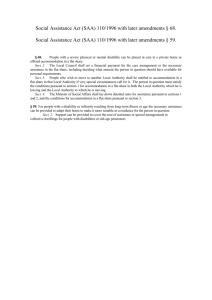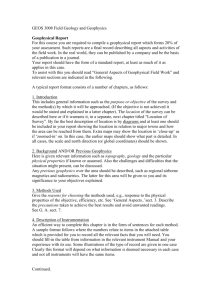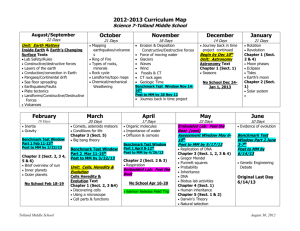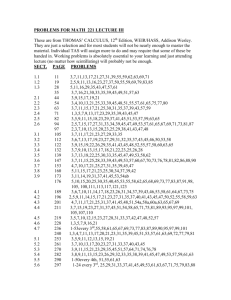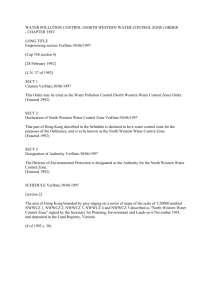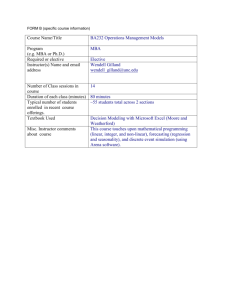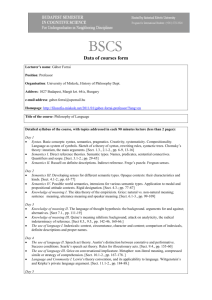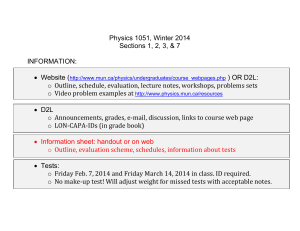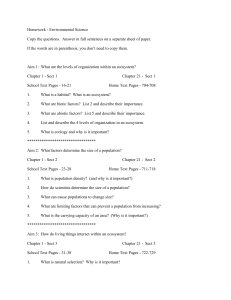Department of Mathematics
advertisement
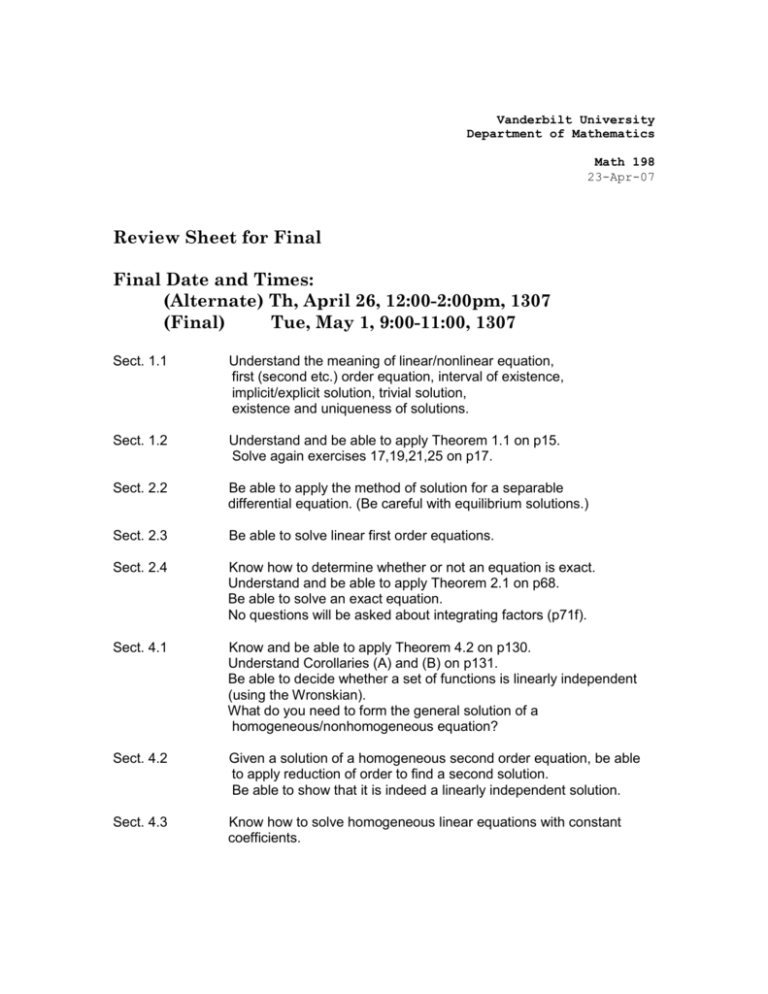
Vanderbilt University Department of Mathematics Math 198 23-Apr-07 Review Sheet for Final Final Date and Times: (Alternate) Th, April 26, 12:00-2:00pm, 1307 (Final) Tue, May 1, 9:00-11:00, 1307 Sect. 1.1 Understand the meaning of linear/nonlinear equation, first (second etc.) order equation, interval of existence, implicit/explicit solution, trivial solution, existence and uniqueness of solutions. Sect. 1.2 Understand and be able to apply Theorem 1.1 on p15. Solve again exercises 17,19,21,25 on p17. Sect. 2.2 Be able to apply the method of solution for a separable differential equation. (Be careful with equilibrium solutions.) Sect. 2.3 Be able to solve linear first order equations. Sect. 2.4 Know how to determine whether or not an equation is exact. Understand and be able to apply Theorem 2.1 on p68. Be able to solve an exact equation. No questions will be asked about integrating factors (p71f). Sect. 4.1 Know and be able to apply Theorem 4.2 on p130. Understand Corollaries (A) and (B) on p131. Be able to decide whether a set of functions is linearly independent (using the Wronskian). What do you need to form the general solution of a homogeneous/nonhomogeneous equation? Sect. 4.2 Given a solution of a homogeneous second order equation, be able to apply reduction of order to find a second solution. Be able to show that it is indeed a linearly independent solution. Sect. 4.3 Know how to solve homogeneous linear equations with constant coefficients. Sect. 5.1 Be able to solve the equation for free undamped motion. Be able to solve the equation for free damped motion by distinguishing the three different cases for 2 2 . Sect. 5.2 Be able to find the eigenvalues and the eigenfunctions for a given initial-boundary value problem. What is the difference between an initial-value problem and a boundary-value problem? Be able to solve boundary-value problems like exercises 27, 28 on p219. Sect. 7.1 Know the definition of the Laplace transform. Be able to compute the Laplace transform for the basic functions from the definition. Sect. 7.2 Know what it means that L and L1 are linear. Be able to use partial fraction to compute inverse transforms. Know how to transform derivatives (cf. Theorem 7.5). Be able to use the Laplace transform to solve differential equations. Sect. 7.3 Know and be able to apply Theorem 7.6 and its inverse form. Be able to write piecewise defined functions in terms of the unit step function. Know and be able to apply Theorem 7.7 and its inverse form. (The Table of Laplace Transforms will be provided) Sect. 7.5 Know how to transform the Dirac Delta Function. Sect. 8.1 Be able to decide whether a given set of solutions is a fundamental set. What is the form of the general solution of a (non-)homogeneous Linear system? Be able to find the eigenvalues and the corresponding eigenvectors of a matrix (distinct and repeated real eigenvalues, complex eigenvalues). Be able to find the general solution of a linear system of 2 equations. Sect. 8.2
